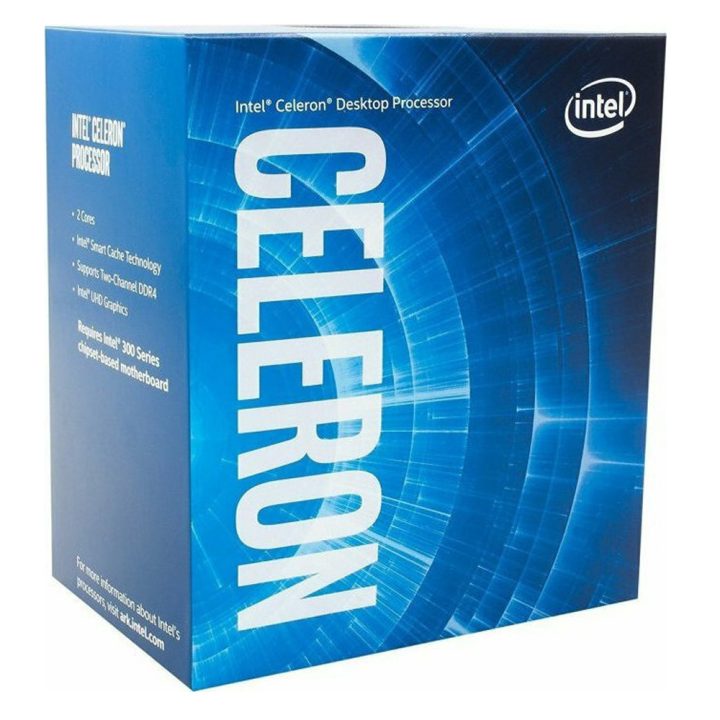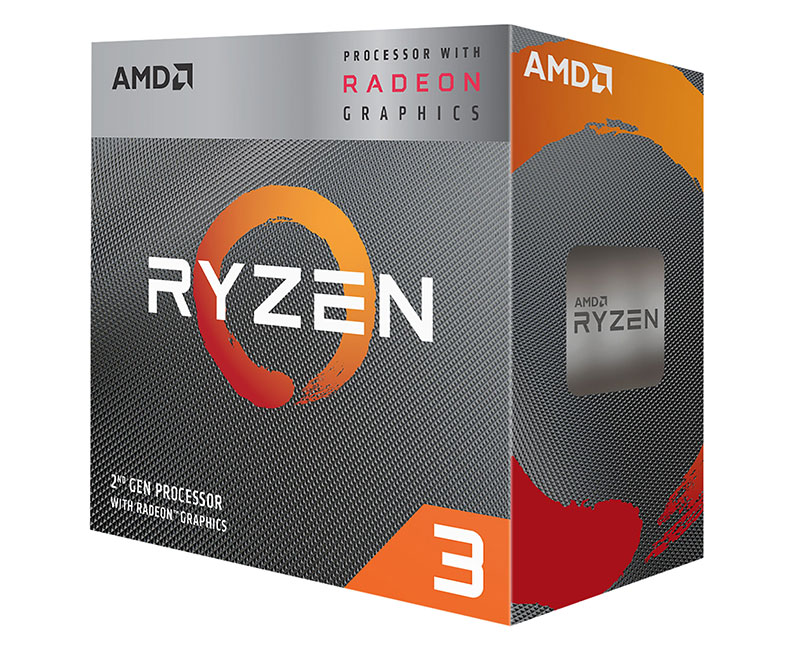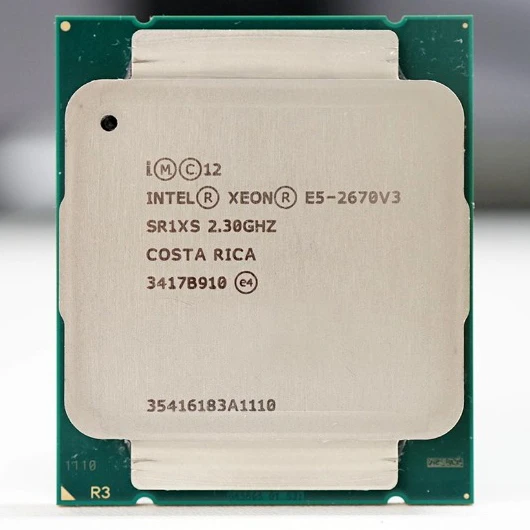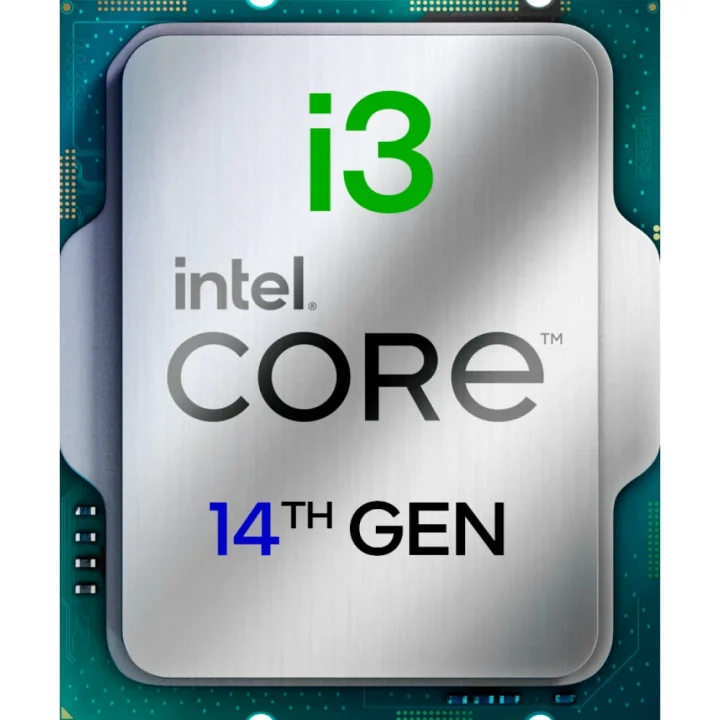Breaking Down the Specs: Intel Celeron Dual Core G5905 3.5GHz Processor Review
The Intel Celeron line has long been a staple in the budget-conscious computing market, offering a balance of affordability and performance. The Celeron Dual Core G5905 is the latest addition to this venerable processor family, positioning itself as a capable and cost-effective solution for a wide range of users. As we delve into the details of this processor, we’ll explore its key features, its positioning within Intel’s product portfolio, and the target market it aims to serve.
The Celeron line has traditionally catered to the needs of entry-level and budget-oriented users, providing a more affordable alternative to Intel’s higher-end Core i-series processors. The Celeron Dual Core G5905 continues this legacy, offering a dual-core design that promises improved performance and multitasking capabilities compared to previous single-core Celeron models. This processor is designed to cater to the needs of users who prioritize value and efficiency over raw computational power, making it a compelling option for tasks such as basic productivity, web browsing, and light media consumption.
Within Intel’s product lineup, the Celeron Dual Core G5905 occupies a unique space, bridging the gap between the entry-level Pentium Gold series and the more powerful Core i3 processors. This positioning allows the Celeron Dual Core G5905 to offer a compelling balance of features and performance, catering to users who require more than the bare-bones capabilities of the Pentium Gold, but don’t necessarily need the full-fledged power of the Core i3. By leveraging the dual-core design and a respectable clock speed, the Celeron Dual Core G5905 aims to deliver a smooth and responsive computing experience for budget-conscious consumers.
Key Takeaways
- The Intel Celeron Dual Core G5905 offers a budget-friendly option for basic computing needs.
- The dual-core design of the processor provides efficient multitasking capabilities.
- With a clock speed of 3.5GHz, the processor delivers reliable performance for everyday tasks.
- The processor is designed with power efficiency and thermal considerations in mind, making it suitable for small form factor systems.
- The integrated graphics and connectivity options make the Celeron G5905 a versatile choice for entry-level computing needs.
Architectural Overview: Exploring the Dual-Core Design
At the heart of the Celeron Dual Core G5905 lies a dual-core architecture, a significant departure from the single-core design of previous Celeron processors. This shift in the processor’s core configuration brings with it a host of implications for performance and multitasking capabilities.
The dual-core design of the Celeron Dual Core G5905 allows it to handle multiple tasks and workloads more efficiently than its single-core predecessors. By having two independent processing cores, the processor can divide and conquer, dedicating resources to different applications or processes simultaneously. This improved parallel processing capability translates to a more responsive and fluid user experience, particularly when running multiple applications or engaging in multitasking activities.
Compared to the single-core Celeron processors, the Celeron Dual Core G5905 offers a significant boost in performance. The dual-core architecture enables the processor to tackle more complex and demanding tasks with greater ease, whether it’s rendering media, compiling code, or running multiple browser tabs simultaneously. This enhanced performance can be especially beneficial for users who frequently engage in productivity-oriented tasks or require a more capable system for their everyday computing needs.
The implications of the dual-core design go beyond just raw performance. The ability to distribute workloads across two cores also contributes to improved power efficiency and thermal management. By dividing the computational load, the Celeron Dual Core G5905 can operate at lower temperatures and with reduced power consumption, making it a more energy-efficient option compared to its single-core counterparts. This efficiency can translate to longer battery life in mobile systems and lower energy bills for desktop users, making the Celeron Dual Core G5905 an attractive choice for environmentally conscious consumers.
Clock Speed and Performance: Analyzing the 3.5GHz Frequency
At the heart of the Celeron Dual Core G5905 is a clock speed of 3.5GHz, a figure that immediately catches the attention of performance-minded users. This clock speed represents a significant improvement over previous Celeron processors, and it plays a crucial role in determining the overall performance capabilities of the chip.
The 3.5GHz clock speed of the Celeron Dual Core G5905 is a testament to Intel’s continued efforts to optimize its processor architectures and manufacturing processes. This frequency, combined with the dual-core design, allows the processor to deliver a tangible boost in performance compared to its single-core predecessors. Users can expect snappier application launches, smoother multitasking, and improved responsiveness in day-to-day computing tasks.
When it comes to real-world performance metrics, the Celeron Dual Core G5905 holds its own against other budget-oriented processors in the market. Benchmark results showcase the processor’s ability to handle a variety of workloads, from basic productivity tasks to light media editing and casual gaming. While it may not match the raw power of higher-end Intel Core i-series or AMD Ryzen processors, the Celeron Dual Core G5905 consistently delivers a level of performance that exceeds the expectations of its price point.
It’s important to note that the 3.5GHz clock speed is not the sole determinant of the Celeron Dual Core G5905’s performance. Other factors, such as the processor’s cache size, memory bandwidth, and architectural enhancements, also play a significant role in shaping the overall computing experience. By striking a balance between clock speed, core count, and other key specifications, the Celeron Dual Core G5905 aims to provide a compelling value proposition for budget-conscious consumers who seek a capable and responsive system.
Power Efficiency and Thermal Considerations
The Intel Celeron Dual Core G5905 not only delivers respectable performance but also demonstrates a strong focus on power efficiency and thermal management. These aspects are crucial in ensuring the processor’s suitability for a wide range of system configurations and form factors.
In terms of power consumption, the Celeron Dual Core G5905 is designed to be a relatively efficient processor, with a thermal design power (TDP) rating of just 58 watts. This relatively low power draw makes the processor an attractive choice for systems with limited cooling capabilities, such as compact desktops, small form factor PCs, or even some laptop configurations. The efficient power consumption also translates to lower energy bills for users, contributing to the overall cost-effectiveness of the Celeron Dual Core G5905.
The thermal profile of the Celeron Dual Core G5905 is another key consideration. With its dual-core architecture and 3.5GHz clock speed, the processor generates a moderate amount of heat during operation. However, the thermal design of the chip, combined with Intel’s advancements in manufacturing processes, ensures that the Celeron Dual Core G5905 can be effectively cooled using relatively simple and cost-effective cooling solutions.
This thermal efficiency allows the Celeron Dual Core G5905 to be a versatile processor, suitable for a variety of system configurations and form factors. Whether it’s a compact desktop, a budget-friendly tower, or even a small-scale server, the Celeron Dual Core G5905 can be seamlessly integrated into these systems without requiring elaborate or expensive cooling solutions. This flexibility makes the processor an attractive option for system builders and upgraders who prioritize energy efficiency and ease of implementation.
Furthermore, the power efficiency and thermal considerations of the Celeron Dual Core G5905 contribute to its suitability for various use cases. From energy-conscious home users to small businesses looking to optimize their IT infrastructure, the processor’s low power draw and thermal profile make it a compelling choice for a wide range of applications, from basic productivity tasks to light server workloads.
Memory Support and Bandwidth Capabilities
| Specs | Details |
|---|---|
| Processor Model | Intel Celeron Dual Core G5905 |
| Base Clock Speed | 3.5GHz |
| Socket Type | LGA 1200 |
| Number of Cores | 2 |
| Number of Threads | 2 |
| Cache | 4MB |
The Intel Celeron Dual Core G5905 not only excels in its core processing capabilities but also demonstrates impressive memory support and bandwidth capabilities. These aspects play a crucial role in determining the overall performance and system compatibility of the processor.
The Celeron Dual Core G5905 supports a range of memory types, including DDR4 and DDR4-2666 memory modules. This broad compatibility ensures that the processor can be paired with a wide variety of system memory configurations, catering to the needs of both budget-conscious and performance-oriented users. The support for DDR4-2666 memory, in particular, provides a significant boost in memory bandwidth compared to previous Celeron processors, which were often limited to slower memory speeds.
The memory bandwidth capabilities of the Celeron Dual Core G5905 are a crucial factor in its overall performance. With the increased memory speed and bandwidth, the processor can more efficiently access and transfer data, resulting in improved responsiveness and reduced bottlenecks in memory-intensive applications. This enhanced memory performance can be particularly beneficial for tasks such as media editing, 3D rendering, and even some light gaming scenarios.
In terms of memory capacity, the Celeron Dual Core G5905 supports up to 64GB of system memory, a substantial increase over the limitations of previous Celeron processors. This expanded memory support allows users to configure their systems with ample RAM, enabling them to multitask more effectively, run memory-hungry applications, and future-proof their systems for potential upgrades or evolving computing needs.
The memory compatibility and bandwidth capabilities of the Celeron Dual Core G5905 make it a versatile processor that can be seamlessly integrated into a wide range of system configurations. Whether it’s a budget-friendly desktop, a compact home theater PC, or a small-scale server, the processor’s memory support ensures that it can be paired with the appropriate memory modules to deliver optimal performance and system responsiveness.
Integrated Graphics: Evaluating the Onboard GPU
In addition to its capable dual-core processing architecture, the Intel Celeron Dual Core G5905 also features an integrated graphics solution, providing users with a level of visual performance that goes beyond the basic capabilities of previous Celeron processors.
The integrated graphics in the Celeron Dual Core G5905 are based on Intel’s UHD Graphics 610 architecture, which offers a modest but capable set of graphics capabilities. This onboard GPU is designed to handle a variety of basic graphics tasks, such as video playback, casual gaming, and light photo editing, without the need for a dedicated graphics card.
When it comes to real-world performance, the UHD Graphics 610 integrated into the Celeron Dual Core G5905 delivers a noticeable improvement over the previous generation of Celeron integrated graphics. Users can expect a smooth and responsive experience when engaging in everyday tasks that involve visual elements, such as web browsing, media consumption, and basic productivity applications.
While the UHD Graphics 610 may not be powerful enough to handle demanding 3D gaming or professional-grade graphics workloads, it is more than adequate for casual gaming experiences. Users can enjoy a selection of less-intensive game titles, such as esports-focused games, indie releases, and older AAA games, without the need for a dedicated graphics card.
It’s important to note that the performance of the integrated graphics solution can be influenced by factors such as system memory configuration, storage speeds, and overall system balance. However, the Celeron Dual Core G5905’s UHD Graphics 610 provides a solid baseline of graphics capabilities that can meet the needs of budget-conscious users who prioritize a well-rounded computing experience over pure graphics horsepower.
For users who require more advanced graphics performance, the Celeron Dual Core G5905 can be paired with a dedicated graphics card, allowing them to unlock the full potential of their system for tasks such as gaming, video editing, or 3D rendering. This flexibility ensures that the Celeron Dual Core G5905 can be tailored to the specific needs and preferences of a wide range of users.
Connectivity and I/O Options
The Intel Celeron Dual Core G5905 not only delivers capable processing power and graphics performance but also offers a comprehensive set of connectivity and input/output (I/O) options, ensuring that users can seamlessly integrate the processor into their desired system configurations.
One of the key connectivity features of the Celeron Dual Core G5905 is its support for a wide range of peripheral devices and interfaces. The processor provides a variety of ports and connectors, including HDMI, DisplayPort, and VGA outputs for display connectivity, as well as USB 3.2 Gen 1 and USB 2.0 ports for connecting various peripherals, such as keyboards, mice, external storage devices, and more.
The availability of these diverse connectivity options allows users to tailor their system setup to their specific needs. Whether it’s connecting multiple displays for enhanced productivity, integrating legacy devices, or expanding the system’s capabilities with external storage or other peripherals, the Celeron Dual Core G5905 offers the necessary flexibility to accommodate a wide range of user requirements.
In addition to the physical connectivity options, the Celeron Dual Core G5905 also supports various networking technologies, including Gigabit Ethernet and Wi-Fi connectivity. This combination of wired and wireless networking capabilities ensures that users can establish reliable and high-speed internet connections, whether they’re setting up a desktop system or integrating the processor into a compact, all-in-one solution.
The comprehensive I/O and connectivity options of the Celeron Dual Core G5905 make it a versatile processor that can be seamlessly integrated into a variety of system configurations. From basic home office setups to more advanced workstations, the processor’s connectivity features allow users to create a computing environment that meets their specific needs and preferences, without compromising on the overall functionality and expandability of their systems.
Compatibility and Upgrade Potential
The Intel Celeron Dual Core G5905 not only offers a compelling set of features and performance capabilities but also demonstrates a strong focus on compatibility and upgrade potential, making it an attractive choice for both system builders and upgraders.
At the core of the Celeron Dual Core G5905’s compatibility is its socket and chipset support. The processor utilizes the LGA 1200 socket, which is also used by Intel’s higher-end Core i-series processors. This socket compatibility ensures that the Celeron Dual Core G5905 can be easily integrated into a wide range of motherboard options, allowing users to choose from a diverse selection of system configurations to suit their needs.
Furthermore, the Celeron Dual Core G5905 is designed to work with Intel’s 400-series chipsets, such as the B560 and H510. This chipset compatibility expands the processor’s versatility, enabling users to pair it with a variety of motherboard options that offer different feature sets and connectivity options, from basic entry-level solutions to more feature-rich alternatives.
The upgrade potential of the Celeron Dual Core G5905 is another key consideration. While the processor may not be the most powerful option in Intel’s lineup, its socket and chipset compatibility allow for a potential upgrade path in the future. Users who start with a Celeron Dual Core G5905-based system can, in many cases, upgrade to a more powerful Intel Core i-series processor without the need to replace the entire motherboard.
This upgrade potential is particularly valuable for system builders and upgraders who want to future-proof their investments. By opting for the Celeron Dual Core G5905, they can create a solid foundation that can be enhanced over time as their computing needs evolve, allowing them to extend the lifespan and capabilities of their systems.
The compatibility and upgrade potential of the Celeron Dual Core G5905 make it an appealing choice for a wide range of users, from budget-conscious consumers to system builders and enthusiasts who value the flexibility to adapt and grow their computing setups over time.
Assessing the Value and Suitability of the Celeron G5905
The Intel Celeron Dual Core G5905 is a processor that offers a compelling balance of features, performance, and value, making it a compelling choice for a wide range of users and system configurations.
One of the key strengths of the Celeron Dual Core G5905 is its dual-core architecture, which provides a significant performance boost over previous single-core Celeron processors. The 3.5GHz clock speed, combined with the dual-core design, delivers a responsive and capable computing experience, allowing users to tackle everyday tasks, light productivity workloads, and even some casual gaming with ease.
In terms of power efficiency and thermal considerations, the Celeron Dual Core G5905 shines. Its relatively low 58-watt TDP rating and efficient thermal design make it a suitable choice for a variety of system configurations, from compact desktops to small form factor PCs. This efficiency not only contributes to lower energy bills but also allows for simpler and more cost-effective cooling solutions, making the processor an attractive option for budget-conscious consumers and system builders.
The Celeron Dual Core G5905’s memory support and bandwidth capabilities are also noteworthy. The processor’s compatibility with DDR4-2666 memory and its ability to support up to 64GB of RAM ensure that users can configure their systems with ample memory resources, enabling smooth multitasking and the ability to handle more memory-intensive applications.
While the integrated graphics solution based on Intel’s UHD Graphics 610 architecture may not be suitable for demanding 3D gaming or professional-grade graphics workloads, it provides a capable baseline for basic visual tasks, media consumption, and casual gaming. This integrated graphics capability can be a valuable asset for users who don’t require dedicated graphics hardware, further enhancing the overall value proposition of the Celeron Dual Core G5905.
In terms of suitability, the Celeron Dual Core G5905 is well-suited for a variety of user profiles and use cases. It caters to budget-conscious consumers who prioritize value and efficiency, as well as system builders and upgraders who seek a capable and versatile processor that can serve as a solid foundation for their computing needs. The processor’s compatibility and upgrade potential also make it an attractive option for users who want to future-proof their systems and have the flexibility to adapt to changing requirements over time.
Overall, the Intel Celeron processor is a budget-friendly option for basic computing tasks such as web browsing, word processing, and multimedia consumption. It offers decent performance for everyday use but may struggle with more demanding applications or multitasking. The Celeron processor is a good choice for casual users or those on a tight budget who don’t require high-end performance.
FAQs
What is the Intel Celeron Dual Core G5905 3.5GHz Processor?
The Intel Celeron Dual Core G5905 3.5GHz Processor is a budget-friendly CPU designed for basic computing tasks such as web browsing, word processing, and light multitasking.
What are the key specifications of the Intel Celeron Dual Core G5905 3.5GHz Processor?
The Intel Celeron Dual Core G5905 3.5GHz Processor features two cores, two threads, a base clock speed of 3.5GHz, and 2MB of SmartCache. It supports DDR4-2666 memory and has a TDP of 58W.
What are the performance capabilities of the Intel Celeron Dual Core G5905 3.5GHz Processor?
The Intel Celeron Dual Core G5905 3.5GHz Processor is suitable for basic computing tasks and light multitasking. It may struggle with more demanding applications such as gaming or video editing.
What are the compatible platforms for the Intel Celeron Dual Core G5905 3.5GHz Processor?
The Intel Celeron Dual Core G5905 3.5GHz Processor is compatible with motherboards featuring the LGA 1200 socket and Intel 400 series chipsets.
What are the advantages of the Intel Celeron Dual Core G5905 3.5GHz Processor?
The Intel Celeron Dual Core G5905 3.5GHz Processor offers a low-cost solution for basic computing needs, low power consumption, and compatibility with modern DDR4 memory.
What are the limitations of the Intel Celeron Dual Core G5905 3.5GHz Processor?
The Intel Celeron Dual Core G5905 3.5GHz Processor may struggle with more demanding tasks such as gaming, video editing, or heavy multitasking. It also lacks the advanced features and performance of higher-end CPUs.






